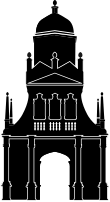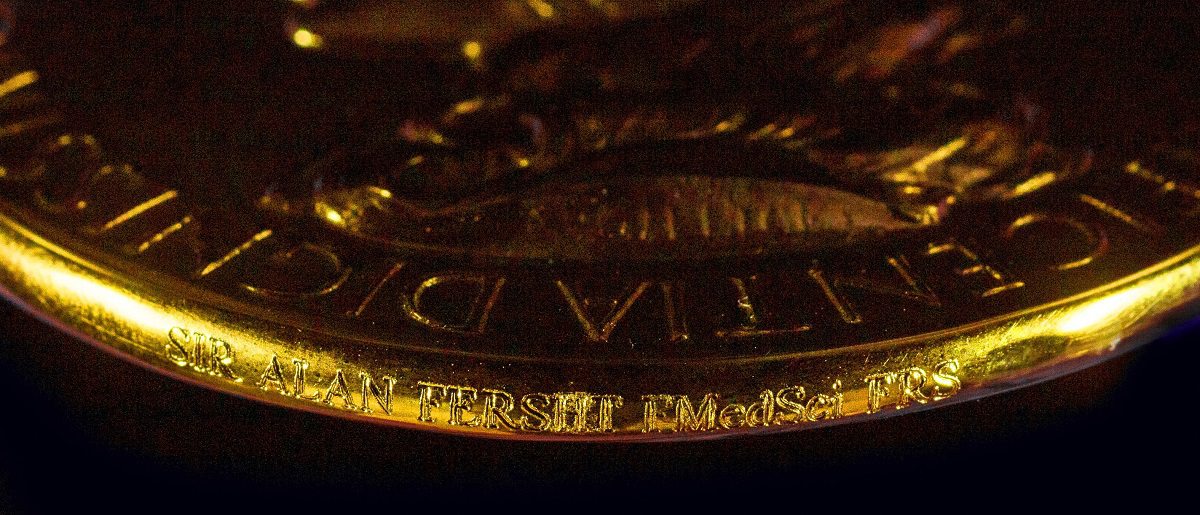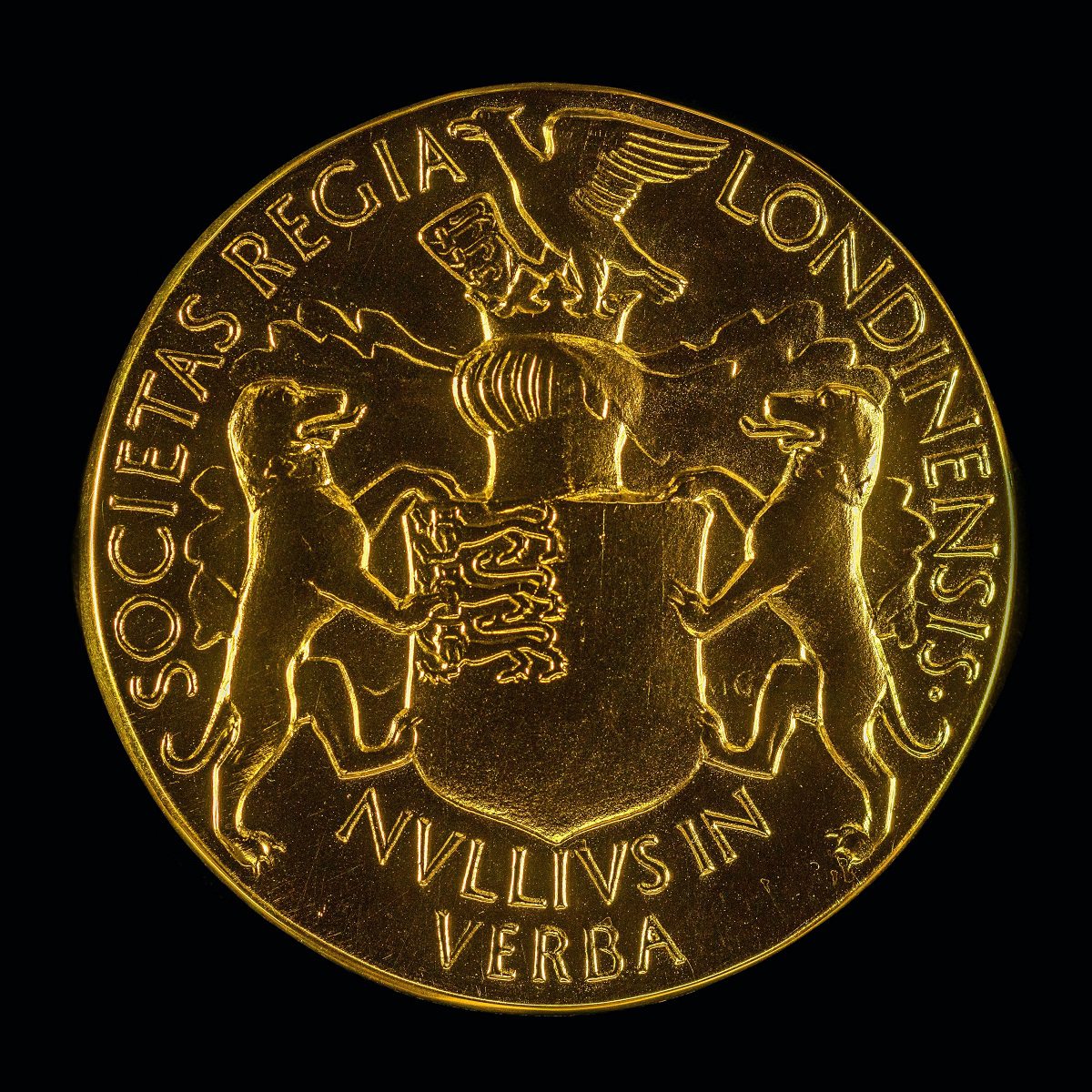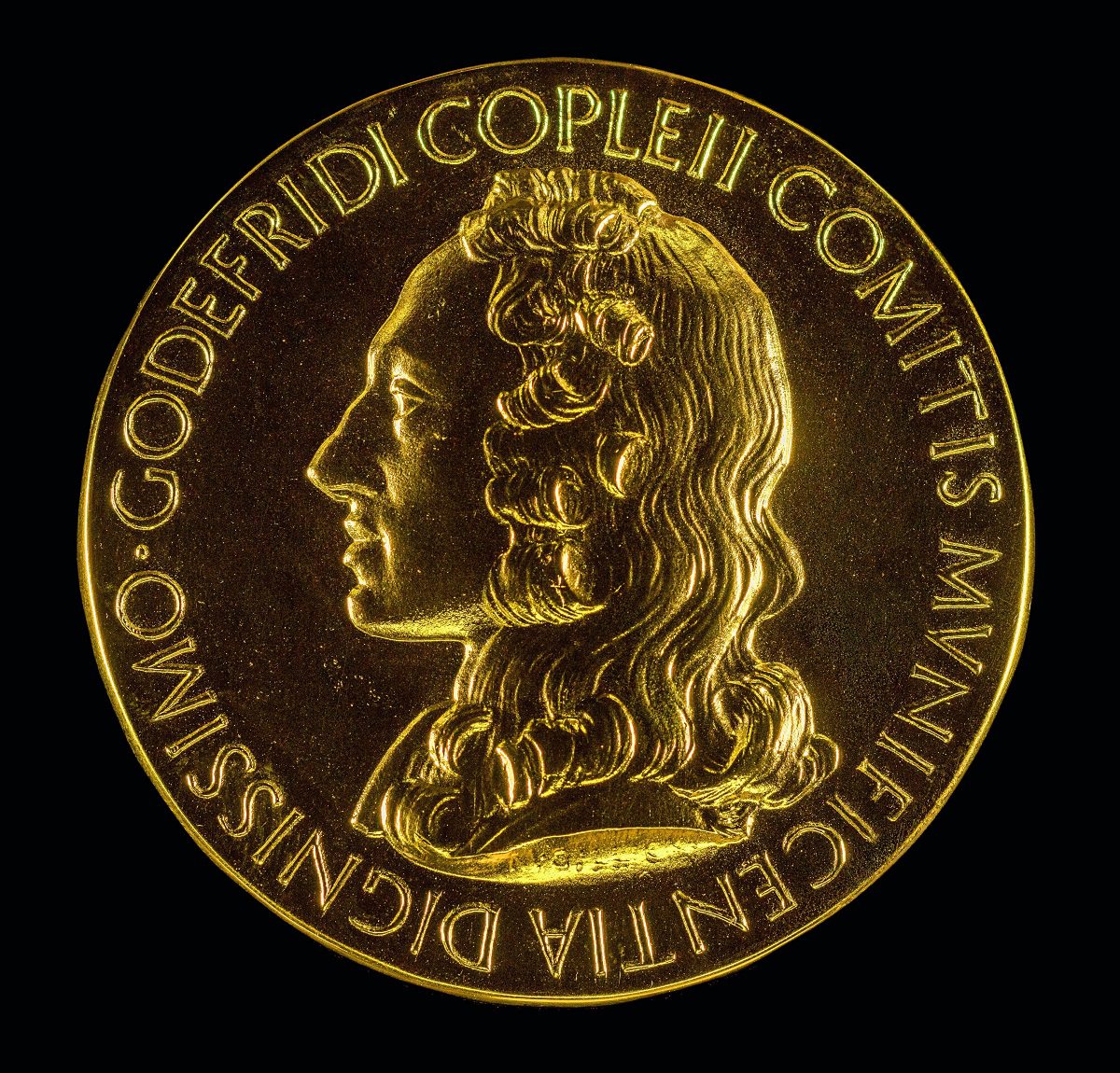Caius Copley Medallists
The Copley Medal is the Royal Society’s oldest and most prestigious award. The medal is awarded for outstanding achievements in research in any branch of science.
The Copley Medal is thought to be the world's oldest scientific prize and it was awarded 170 years before the first Nobel Prize. First awarded in 1731, the annual prize is awarded for “outstanding achievements in research in any branch of science”, on an alternating basis between the physical sciences (odd years) and the biological sciences (even years).
1802, William Hyde Wollaston: “For his various Papers printed in the Philosophical Transactions (discovering platinum and rhodium).”
1824, John Brinkley: “For his various communications to the Royal Society (Astronomy).”
1927, Charles Sherrington: “For his distinguished work on neurology.”
1950, James Chadwick: “For his outstanding work in nuclear physics and in the development of atomic energy, especially for his discovery of the neutron.”
1955, Ronald Fisher: “In recognition of his numerous and distinguished contributions to developing the theory and application of statistics for making quantitative a vast field of biology.”
1957, Howard Florey: "In recognition of his distinguished contributions to experimental pathology and medicine (penicillin).”
1972, Nevill Mott: "In recognition of his original contributions over a long period to atomic and solid state physics."
1975, Francis Crick: "In recognition of his elucidation of the structure of DNA and his continuing contribution to molecular biology."
2006, Stephen Hawking: "For his outstanding contribution to theoretical physics and theoretical cosmology."
2020, Alan Fersht: "He has developed and applied the methods of protein engineering to provide descriptions of protein folding pathways at atomic resolution, revolutionising our understanding of these processes.”
With thanks to Professor Sir Alan Fersht for contributing the photographs of the Copley Medal.




